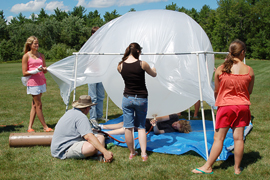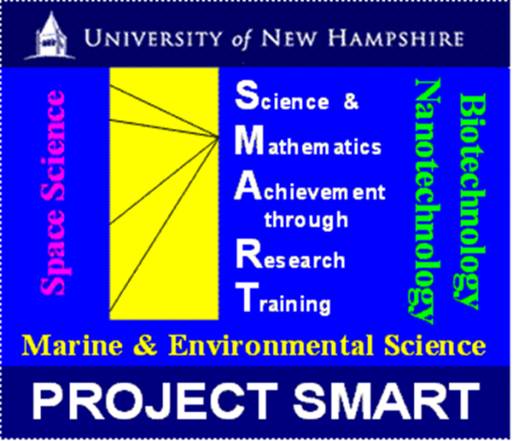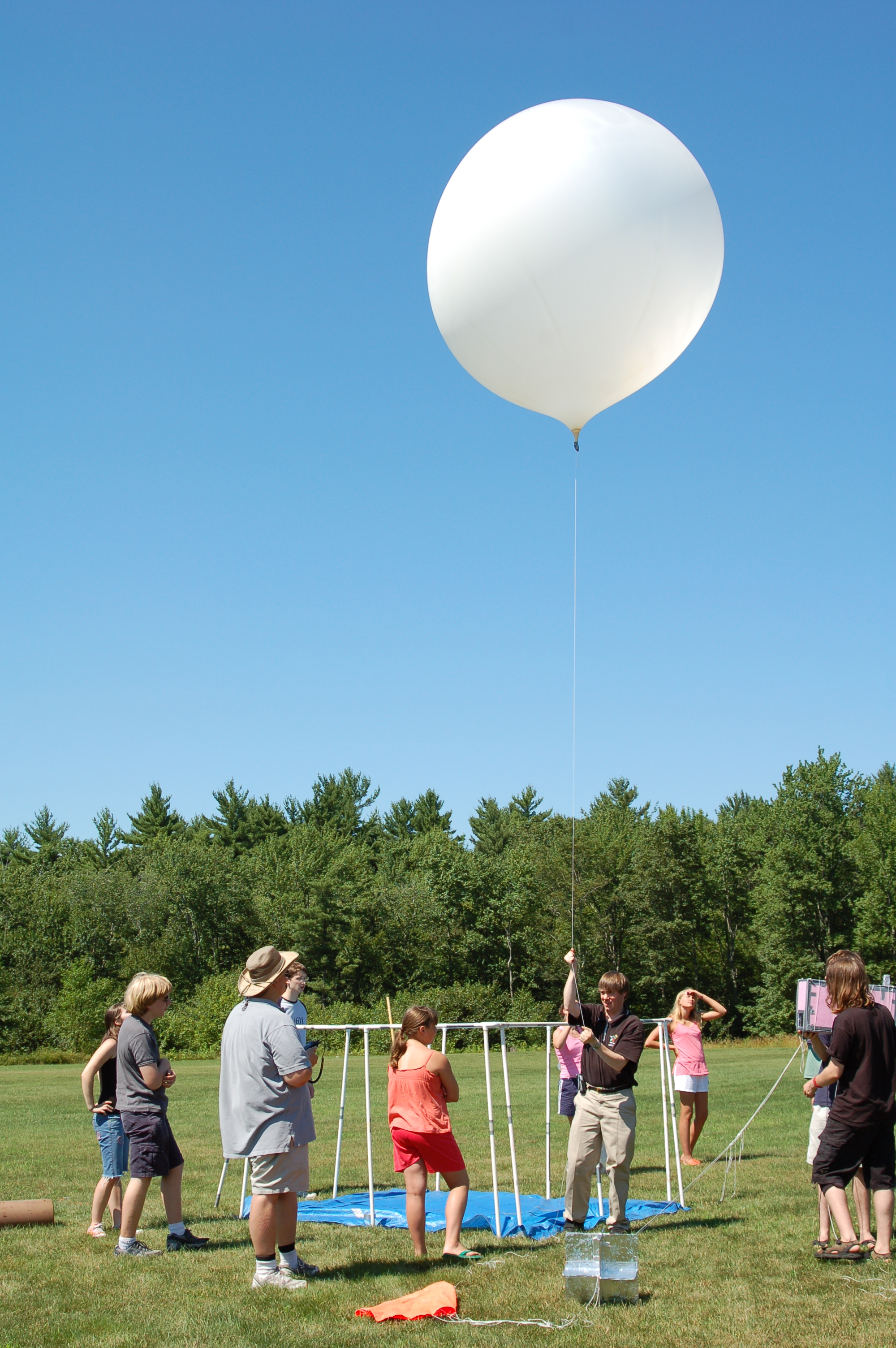Teacher Information
The Project SMART experience within the space science module is a hands-on experience. The entire month-long experience is built upon three activities: classes in advanced high school and undergraduate physics, hands-on research with the UNH faculty, and a team project. In recent years, the team project has been the construction of a high-altitude balloon payload to perform basic scientific measurements in the upper atmosphere. As our program has evolved, the sophistication of our scientific payloads has grown.
These pages contain the most advanced and sophisticated information that comes out of the Project SMART effort. We offer to you seminars on space science that contain information that can be brought into the high school classroom and physics clubs around the country. We also provide detailed information following the evolution of our balloon program that high schools everywhere can follow if they wish to bring this opportunity to their students.
Space Physics Seminars:
Many schools provide classes in astronomy, but few offer lectures or demonstrations in space physics. The greatest distinction between the two disciplines is that astronomy seeks to understand distant objects by measuring the light that comes from them. In the same way, interstellar space can be better understood by measuring and understanding the light that passes through these regions. Space physics seeks to make in situ measurements. Instruments are launched into space where the electromagnetic fields, ions, electrons, and neutral atoms of that region are measured. The variation of these measurements with time and conditions will, in time, provide insight into the local and nonlocala dynamics that is their source. In this manner, we learn about the near space environment of the Earth (aurora, ionosphere, magnetosphere), the environs of other planetary bodies along with moons, comets and asteroids, the interplanetary solar wind and it's solar source, solar and galactic cosmic radiation, and the interaction of our heliosphere with the local interstellar medium.
The following links contain zipped files of PowerPoint prsentations, figures, movies, etc. Included as they become available are PDF files offering detailed explanations of individual slides in greater detail.
The journey begins with a basic overview of space physics. From there, we evolve an understanding of our Sun, the solar wind, the magnetic environment around the Earth called the magnetosphere, and then onward to the other planets and cosmic radiation.
- Introduction to Balloon Physics by Prof. Charles W. Smith
- Introduction to Space Physics by Prof. Charles W. Smith
- Our Star, the Sun
- The Solar Wind
- Magnetic Waves in Space
- Coronal Mass Ejections and Shocks
- Shock Acceleration I
- Shock Acceleration II
- Building Spacecraft for NASA by Dr. Mark Popecki
- Building Instruments for NASA Spacecraft by Dr. Toni Galvin
- Auroral and Polar Physics and Suborbital Rocketry by Prof. Marc Lessard
- The Earth's Magnetosphere
- Magnetic Reconnection
- NASA's Magnetospheric Multiscale (MMS) Mission by Prof. Roy Torbert
- NASA's STEREO Mission by Prof. Toni Galvin
- NASA's IBEX Mission by Prof. Harald Kucharek
- Magnetospheres of the Other Planets
- Introduction to Cosmic Radiation by Dr. Mark Popecki
- Introduction to Cosmic Radiation by Dr. James Connell
We cannot offer all of the above seminars in any given year, but these are some of the seminars we have presented in recent years. Each year we try to tailor the seminars to the research subjects so that students gain a perspective on the science they are performing and can place their efforts within "the big picture".
Our Balloon Program:
The space physics component of Project SMART has always included a group project for the students to complete together. We have built small rockets with solid engines and assembled robotic spiders. The latter quickly evolved into robot wars. Since 2008 we have been designing, building and flying scientific payloads using high-altitude weather balloons. As this program has evolved the versatility of the scientific payload has grown with it. Also, the students have now been presented with entirely new opportunities within the SMART program where they build microcontroller boards and program them for autonomous control of the payload. The following is both a record of our evolving program as well as a detailed description of how other schools can do the same thing.
Getting Started with Ballooning:
- Legal Requirements
- Flight Dynamics
- Computing the Rate of Ascent
- Predicting Touchdown Time and Location
- Tracking the Payload (Using GPS, HAM radios and the web)
- Constructing The Basic Vehicle
- Cameras
- Batteries
Advanced Ballooning:
- Building a Better Flight Vehicle
- Passive Stabilization of the Payload
- Compact Avionics
- Data Collection and Autonomous Flight Commanding
- Flying a Geiger Counter
- Flying Pressure and Temperature Gauges
- Flying a Utilitarian Magnetometer
- Improved Centralized Battery
- An Inexpensive Strobe for Night Flights
- A Meteorite Dust Collector for High Altitudes


(left) Construction of our first flight vehicle not requiring a parachute.
(right) Inflating the balloon.
Cage and plastic sheets help protect the balloon while inflating.
Financial support for Project SMART is provided by the Dean of the College of Life Sciences and Agriculture, the Dean of College of Engineering and Physical Sciences, NH Space Grant Consortium, NSF-NH EPSCoR Grant, NH Sea Grant program, and the UNH Nanogroup.



